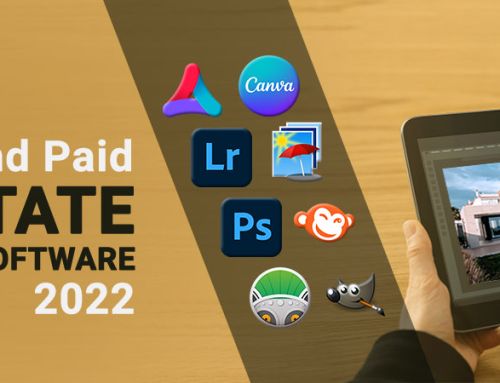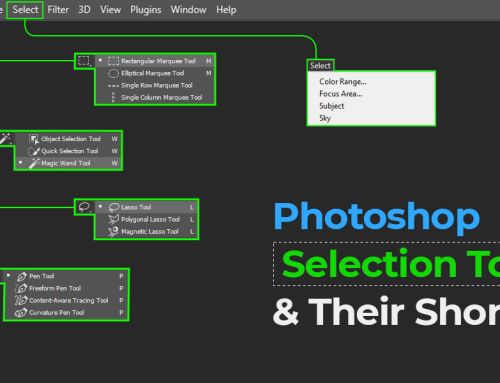Editorial photography is a type of photography where you take pictures to tell a story or support a narrative. You will find these images alongside magazine articles, editorials, blogs, and other publications.
You might be wondering: “There are so many photos in magazines and blogs. Are they all editorial photos?” Well, these images are not the same. But stopping with that answer won’t help you understand the matter and how to differentiate them from the other types of photography.
So, in this article, we will look at the subject in detail to get a thorough understanding
Let’s begin!
What is editorial photography?
Editorial photography is the art of taking photos for print and online publications in a way that conveys a story. These images are made to support the story or narrative in the text or create a specific mood or tone for the article they accompany. People who take editorial pictures are called editorial photographers.
Publications often hire editorial photographers to make images that will help readers visualize what a writer is saying in an article. Depending on the intention, these images can be composed to look artistic or serious.
Editorial photos can also appear on their own as a statement piece. They can be used as standalone images to imply a narrative or outline a creative concept.
Now, let’s see how editorial photos are used in different cases.
Where is editorial photography used?
Editorial photographs are generally used in places where a story needs to be told. As mentioned earlier, they are storytelling aids that often appear with text in a publication. They can be used in different ways, depending on the publication, including:
Magazines: Can you imagine reading a magazine without any images at all? It would be boring, and readers would find it difficult to understand certain information. The reason why the saying “a picture speaks a thousand words” exists, is because visual information is better received than text.
Almost all magazines carry articles with high-quality images related to the topic. It could be a story about a personality, restaurant, animal, town, event, etc. These images can be staged to tell a story or show as much information as possible in one shot or a series of images.
Newspapers: While some editorial photos are used in newspapers, not all images in these publications can be called such. As mentioned before, editorial images tell or support a story. They can also be staged to create a certain effect or mood. It doesn’t mean that staged images are fake or misleading. It just means that the shot is composed to convey a message or story. For example, taking a photo of an entrepreneur with their team or products for a feature article.
Such staging may not be possible during communal tensions, protests, wars, etc. These images would fall into the photojournalism category. Later in this article, we’ll look at the differences between photojournalism and editorial photography.
Editorials: An editorial is a written piece in which the author attempts to express their opinion on a particular issue. Editorials can be the opinion of the editor or the editorial board. They are written to explain, interpret, criticize, persuade, or praise the subject, issue, or individual. They often cover controversial, social, or political issues and are meant to influence public opinion, promote critical thinking, or cause people to take action. You will find editorials in newspapers, magazines, and other publications.
Editorials don’t usually come with too many images, like most other articles. They are usually accompanied by one or two editorial photos that depict the topic.
Documentaries: Documentaries are non-fiction films about real events, circumstances, and people. Documentaries aim to educate, reveal a topic or issue, or maintain a record. Even before cameras, people documented animals, plants, anatomy, etc. with drawings. So, you can imagine how vital film and photos are to helping people understand historical events like the civil rights movement.
Blog articles and websites: Editorial photographs can also be used in non-commercial publications such as blogs and websites. These mediums often need captivating imagery to grab the viewer’s attention. That is why they use high-quality and well-composed images to add value to their content.
If you’ve ever read through a travel or food blog, you’ve probably noticed the kind of images they use. Depending on the quality, pictures on food blogs can make your mouth water. Similarly, stunning photos on travel blogs can make you feel like you’ve just visited the place. Even event websites rely on editorial photography to attract viewers and generate interest.
Editorial photography vs. commercial photography
Editorial and commercial photos often overlap based on context. For example, a picture of a woman geared up for a surfing competition can be an editorial photo if placed next to an article about surfing. However, the same image can be taken as a commercial photograph if used in a surfboard ad.
Still, there are some important points of difference between the two photography styles. They are as follows:
Purpose: Editorial photography aims to capture images in a way that tells a story. On the other hand, commercial photography is mainly used to advertise and aims to sell a product or brand and increase sales.
Editorial pictures are used in magazines, blogs, editorials, documentaries, etc. Commercial images are used in magazine and newspaper ads, billboards, product packaging, online ads, brochures, etc.
Clientele: The clients for editorial photos are generally publications that want pictures that can be visual aids to their stories or articles.
In the case of commercial photos, the clients are generally companies, brands, or individuals looking to push sales or brand awareness through images.
Budget: Commercial photoshoots are more likely to have a higher budget than editorial shoots, as the aim is to make more money. Commercial photographers also generally get paid more than editorial photographers.
Creative freedom: In commercial photography, the photographers usually have to go by the company’s or brand’s guidelines. They have limited creative freedom when compared to editorial photographers.
Licensing restrictions: Pictures taken for commercial purposes need the permission of property owners, artists, and recognizable people in the image. That is because the images will be used for advertisements and promotional purposes.
Pictures licensed as editorial content don’t have these restrictions as they will be used for news or educational purposes. However, they can’t be used to sell, promote, or monetize a business, product, or service.
Editorial photography vs. photojournalism
Earlier, we mentioned that while editorial pictures are used in newspapers, not all images are editorial. This section will see what makes photojournalism different from other images found in new content.
Purpose: As we have discussed earlier, editorial photography aims to tell a story or support a story or narrative. It is more subjective by nature.
In the case of photojournalism, the purpose is to show the truth. It is very objective and attempts to show events, people, and situations as they are. Some images, especially of war, crime, and political strife, can be very disturbing.
Creativity: Photojournalists are supposed to show true events and facts through their photography. They often don’t alter their images in any way, as there is almost no scope for creativity. Even magazines and newspapers have strict rules regarding the composition and post-processing of pictures in photojournalism. These restrictions are not present in editorial photography.
Style: Even though there are many restrictions on how photojournalistic pictures are taken, there is still a kind of freedom in the style. Photojournalistic images are more candid-documentary images that allow the photographer to be themselves. There is no pressure or direction on how the photos should be taken. Photojournalists are free to be spectators and “document” events as they occur in front of them.
In editorial photography, the photographer needs to put in the effort to compose and take photos that can effectively convey the message or support a story.
How do you enhance editorial photoshoots?
No matter the style of photography, you can’t hand over any raw files to your client and assume your work is finished. Clients always expect that the photos you give them are properly processed. Therefore, you must perform some post-processing to enhance the images and correct their flaws. Although the degree of post-processing depends on the type of photography.
Some important photo enhancements you should make are:
- Color correction,
- Cropping,
- Perspective correction,
- Color grading, and more.
You can use photo editing software like Adobe Photoshop or Lightroom to process your images before handing them to the client. If you feel like you don’t have the necessary skills to process your photos or have too much work on your hands, you can always outsource the work to a professional photo editing company.
Wrapping up!
While it can be confused with photojournalism and commercial photography, editorial photography is a discipline on its own. It aims to tell a story through still images and is essential to print and online publications. If you are a photographer wanting to freely express your artistic visions, this is the best discipline for you.
We hope this article has helped you understand and appreciate editorial photography. Cheers!


